For decades, scientists have been zealously pursuing signs of life beyond our Green Planet, as creatives including authors, directors, and musicians have turned towards the distant stars and Life on Mars, even as many watch the skies, believing one day we will boldly go where no man has gone before.
And while space missions have only shuttled humans out to the nearby moon (which turns out to be an uninhabitable rock), scientists still hold hope towards the possibility of life being sustained on our neighbouring planets. That dream may still have a few years in the making, but we are able to get a glimpse of how the future may play out with Per Aspera, a game involving terraforming of the mysterious Red Planet.
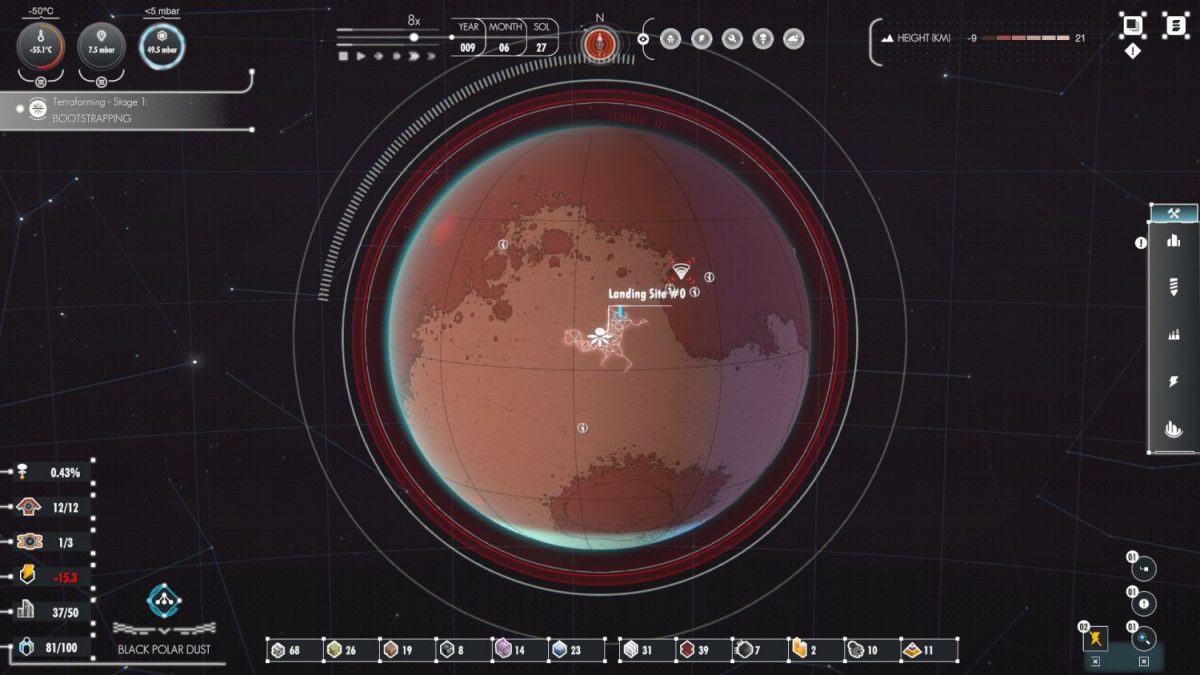
Air, water, food are the three basic elements for most life forms to survive but Per Aspera, you don’t quite start off with these elements as your main concern. Awakening as an Artificial Consciousness named Autonomous Machine Intelligence (AMI), you are transported onto a world whereby the colonisation of Mars is less a science-fiction pipe dream, and more an actual prime directive to be accomplished.
Disclaimer: We played the game on the Hard level, and in efforts to not spoil the surprise, we won’t be diving too deep into the mysterious threat that looms over the planet.
Grand-scale Mars colonisation begins with the simple task of mining for materials. As AMI, you will be given directives to build various structures such as mines, factories, Solar Farms, colonies, drone hubs, and more. Viewing the world from AMI’s sleek vector interface point-of-view, you get a gorgeous orbital view of the Red Planet as you watch your colony grow.
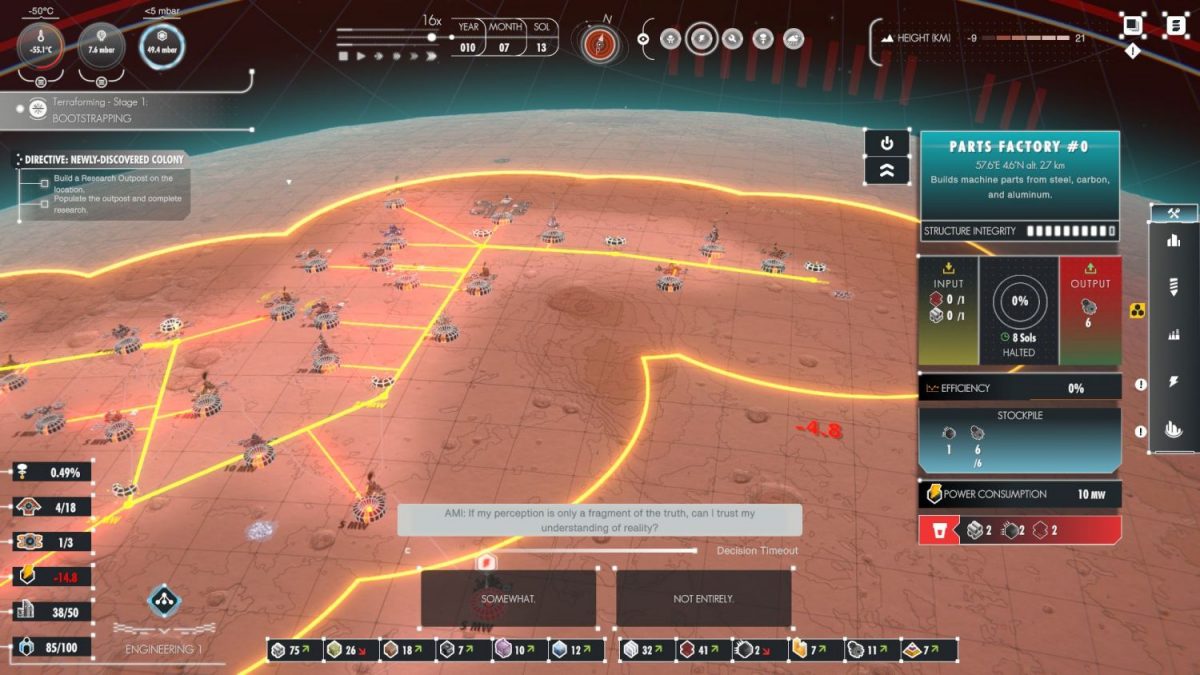
One of the biggest appeals of Per Aspera is the compelling narrative it promises the players. AMI herself grows along with the soon-to-be Green Planet 2.0. Starting off as a confused, freshly awakened “newborn”, she receives guidance from her creator, Dr. Foster, voiced by the talented Troy Baker (The Last of Us, Batman: Arkham). Soon, AMI starts questioning her existence and how her relationship with humans will change the way that she decides to manage the planet as she reflects on herself and the tasks that she performs.
The game delves into existential questions about the relationship between AI and humans. It explores how AI may soon come to self-awareness in the future; a reality that is closer to us now than ever before with the creation and discovery of new technologies happening at unprecedented speeds in the current decade. AMI offers insights such as selfishness being the proof that there is a self and therefore she exists as an individual separate from just the humans’ goals.

Alongside philosophical insights, Per Aspera offers the thrilling experience of deep space exploration with the freedom to explore Mars’ surface. From the site explorations, you can start uncovering the hidden history of the planet, including abandoned Martian bases, which, hint, will be related to the mysterious threat on the planet.
Science fiction enthusiasts will appreciate the geographically-accurate map built from NASA’s own data, littered with trivia of old space rovers and mission sites. There are even extra touches of details to the overall narrative consisting of the detailed records of new research, technologies and the ever shifting changes of the planet’s surface.

As the drones and systems are mostly autonomous, they can pretty much run by themselves at the start. One of the best things to do at this point is to simply sit back and enjoy the sweeping view of the red terrain as your city grows. Alongside the beautiful environmental storytelling is a chill, techno ambient track playing constantly interspersed by satisfying machine grinding and bots zooming ASMR.
Gameplay itself may seem basic as you’re just building things based on a list of goals. But, in a blink of an eye, you’ll realise that you’ve unwittingly gone at it for 5 hours straight. As your world expands, city building to meet new endless new Directives will quickly become addictive. And you’ll soon discover that these tasks actually require an unexpected amount of brainpower to puzzle out how to make use of limited resources to meet each new goal, each which comes with hidden requirements that add to the challenge.
The zen-like experience picks up pace as the story unfolds. As your city expands, Per Aspera evolves into a demanding management game which requires you to micromanage at times. You realise that you’ll have to intervene using appropriate building strategies or you might just find yourself out of material for expansion due to the scarcity of the finite resources.

Moreover, it is crucial to remember that the Red Planet remained uninhabitable due to its climate. Rifed with ruthless sandstorms, dust devils, and imminent impacts from comets and space debris, will throw you into power trips and leave you with destroyed facilities. You will be forced to learn solutions to get around these problems or even rebuild your bases.
At a certain point, you will move on to build Spaceports and Colonies for your Earthlings to arrive. The colonists will help to further your terraforming via research, allowing for AMI to work on ambitious projects such as launching satellites, creating oxygen releasing plants, and creating a Greenhouse Gas factory to increase the temperature of the planet.
The first 5 to 10 hours or so are great, you’ll have fun playing Per Aspera and exploring the planet plus seeing how far you can push the expansion while re-building makes it engaging enough at first. But when the human colonists start coming in, it is when the game starts getting a little tedious with the various humans doing whatever they want with little to no regard about the environment.
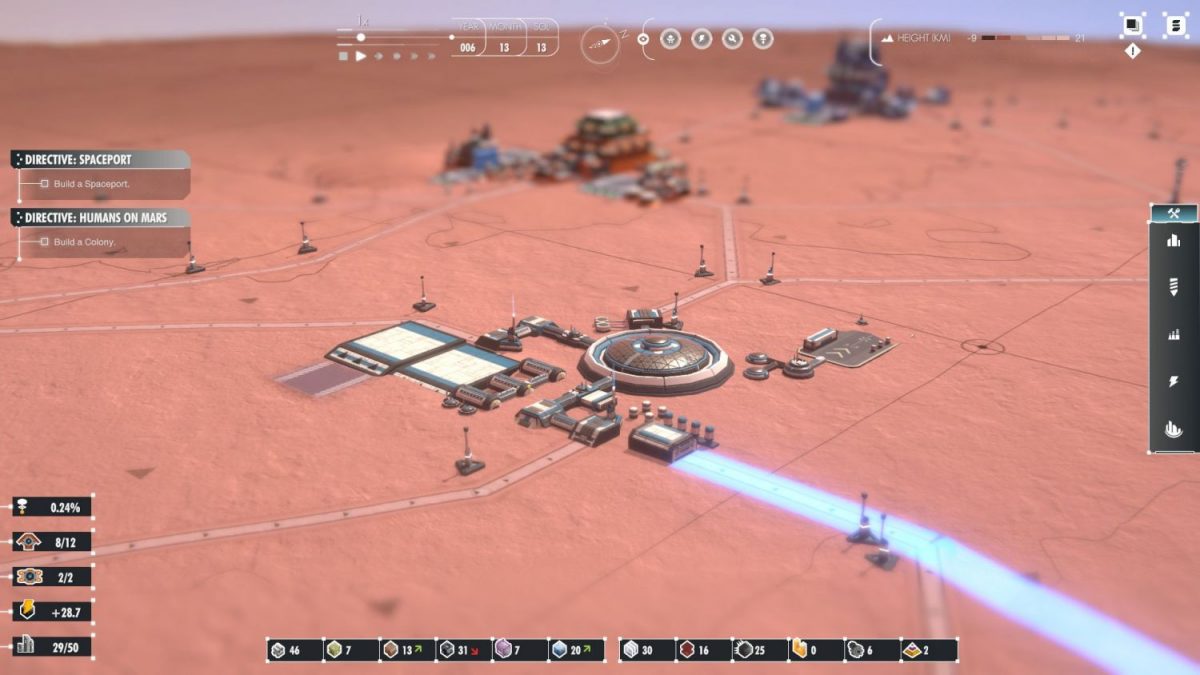
Working with humans is exciting, but they can get annoying when they get in the way of your constructions and the constant calls don’t help much either. Missing a delivery from the food factory can lead to their dissatisfaction and see them departing back to Earth. This means waiting for new colonists to arrive which may delay research timelines. It is also painful to see how the Earthlings themselves don’t seem to care about the long-term repercussions of their actions on the newly terraformed planet.
Plus the game mechanics become illogical after some time. Resources get cut off due to the ocean forming, with important mines being flooded underwater. The planet can be made greener with plants. However, overplant the lichen and you get too much oxygen and will have to watch your buildings start burning up like its a gender reveal party. The worst part is that the atmospheric imbalance is mostly irreversible, which can get frustrating.
Your goal is to create a self-sufficient planet filled with greens for new life-forms to thrive. However with the appearance of oceans and plants, it is disappointing that we are unable to extract water or food from these sources (the humans oddly prefer chemically processed foods instead of fresh green it seems). Instead, you will be forced to drill for underground water and build food factories, all which cost more of that precious limited resource.
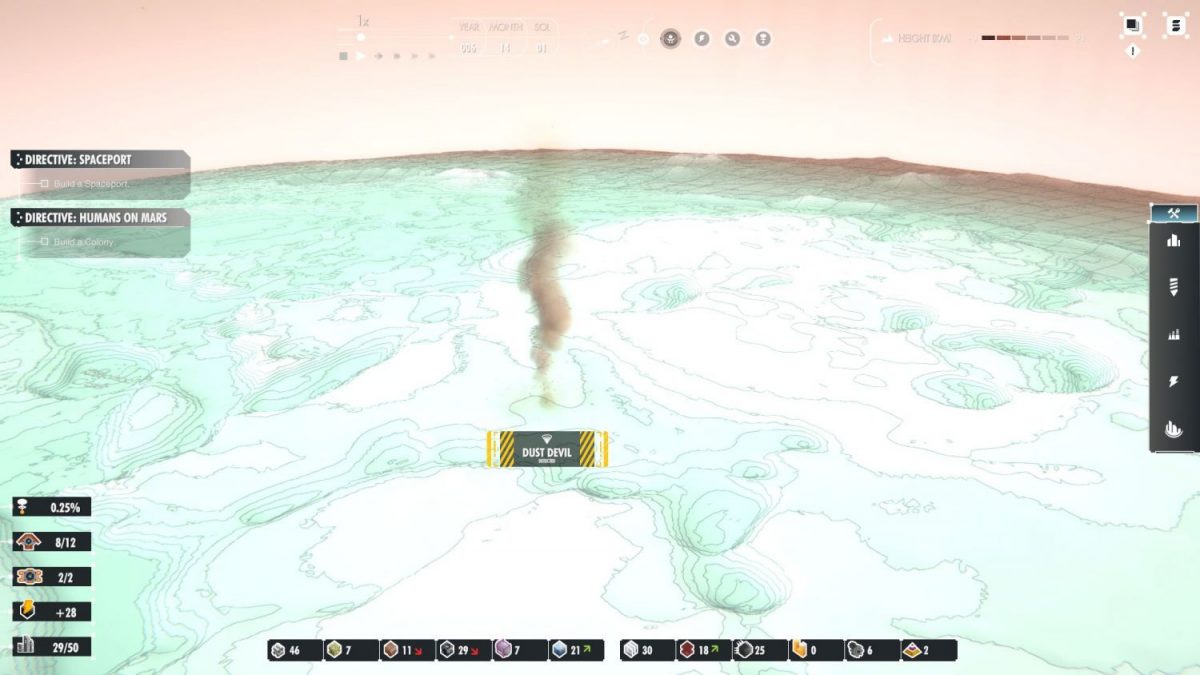
The unexpected twist in Per Aspera comes into play after hours of gameplay. Between micro managing your new pet planet and preparing it for the harsh Mars climate, you will also have to be prepared to defend it. Enemy Martians will attempt to launch attacks on your colonies. While you won’t be expected to do much manual battling with these aliens, you’ll have to continue to build and manage defenses, ensuring that they are in place for new waves of attacks.
And while the external threat may seem life-threatening, it is nothing compared to the sinister invisible enemy which looms like the Sword of Damocles over you. Unveiling the secret behind the abandoned bases and melting the ice caps will reveal a secret that adds an extra “oomph” to the plot.
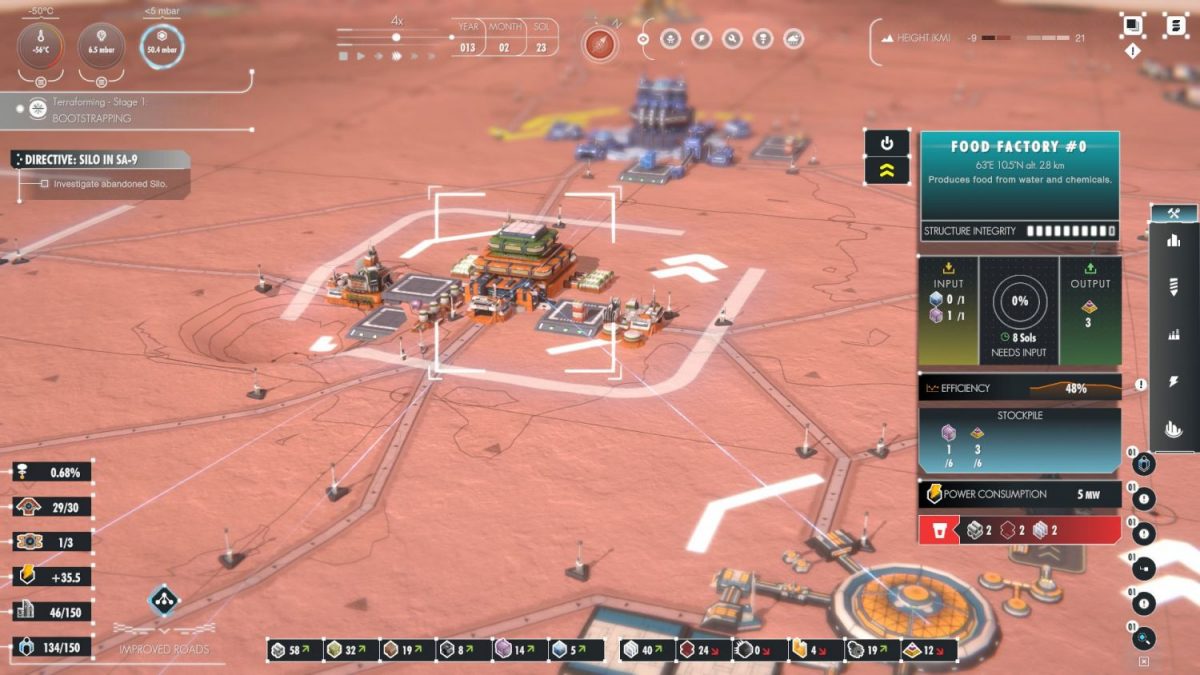
As per its name Per Aspera, expanding the human colony over extraterrestrial soil comes with its own unique set of trials and tribulations. The large network of cities spanning across the entire surface of Mars can quickly accumulate into a logistics nightmare. Impetuous decisions may leave you feeling aggrieved and confused with a unsustainable city.
Faced with game over after investing hours into your simulation is a grim and frustrating prospect. Yet this is something that can be too easily achievable when things are built in the wrong order or you run out of scarce resources. Even small mistakes such as failing to notice a bottleneck in your resources due to a broken power station could be deadly. Moreover, the automated drones which are supposed to help with the system are often unable to prioritise their tasks properly. Thus, this leads to them being inefficient and not carrying out their proper duty of transporting crucial material to the factories.
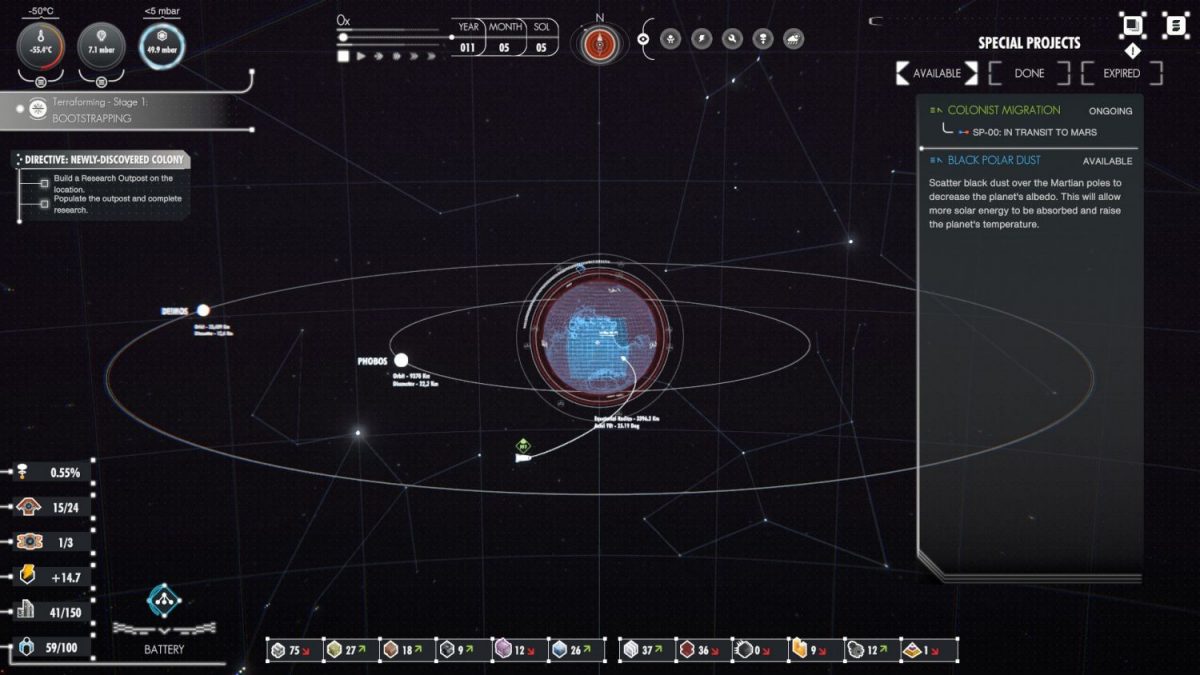
The timeline of the game itself is confusing at times. You may choose to fast forward your view of the happenings to up to 16x the speed. Yet even after half a century, you will still receive real time calls from humans who never seem to age, creating a jarring contradiction in the time-flow of the games. The calls can get quite distracting when it pops up in the middle of you doing other tasks
That being said, the dialogue is pretty charming with stellar performances from a star-studded voice cast including Baker, Phil LaMarr, Laila Berzins, Yong Yea, Lynsey Murrell, and Nneka Okoye.
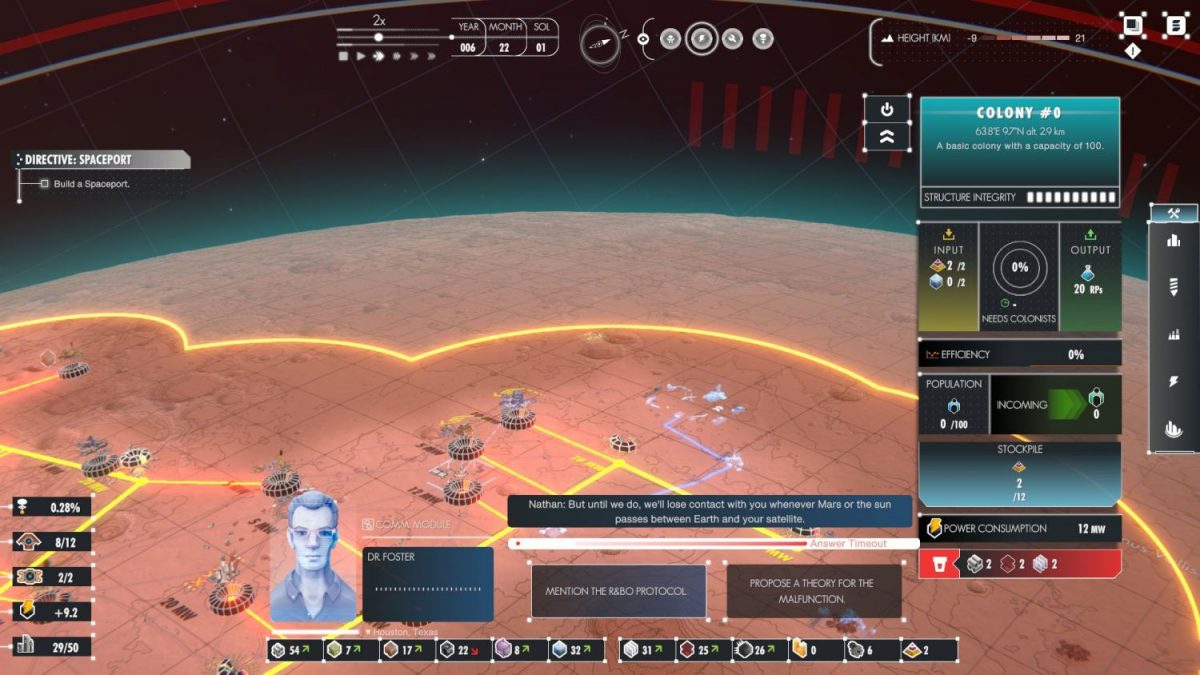
Its sleek animation, cute bot and drone designs and complex narrative packed with fully fleshed out sci-fi trivia all add up to a satisfying end when you manage to finish the campaign. The game’s title is derived from the Latin phrase “Per Aspera ad astra” which translates to “Through hardship, we will reach the stars”. It’s no coincidence that only the first part was used in naming the game. Only through overcoming hardships and surviving the harsh conditions of Mars, we can transform the impossible planet into a new home for Earthlings to thrive in.
Per Aspera is developed by Tlön Industries and published by Raw Fury and currently goes at a price of S$26 on Steam.
GEEK REVIEW SCORE
Summary
Beyond its geographically-accurate, beautifully rendered visuals, Per Aspera is an atmospheric game with a surprisingly compelling plot and exciting secrets and histories which will unveil a menacing presence on the mysterious Red Planet. The game has plenty of potential but may require more fixes from the developers with regards to in-game mechanics and logistics to fully turn into a satisfying city builder.
Overall
6.8/10-
Gameplay - 6.5/10
6.5/10
-
Story - 7/10
7/10
-
Presentation - 7/10
7/10
-
Value - 6.5/10
6.5/10
-
Geek Satisfaction - 7/10
7/10













